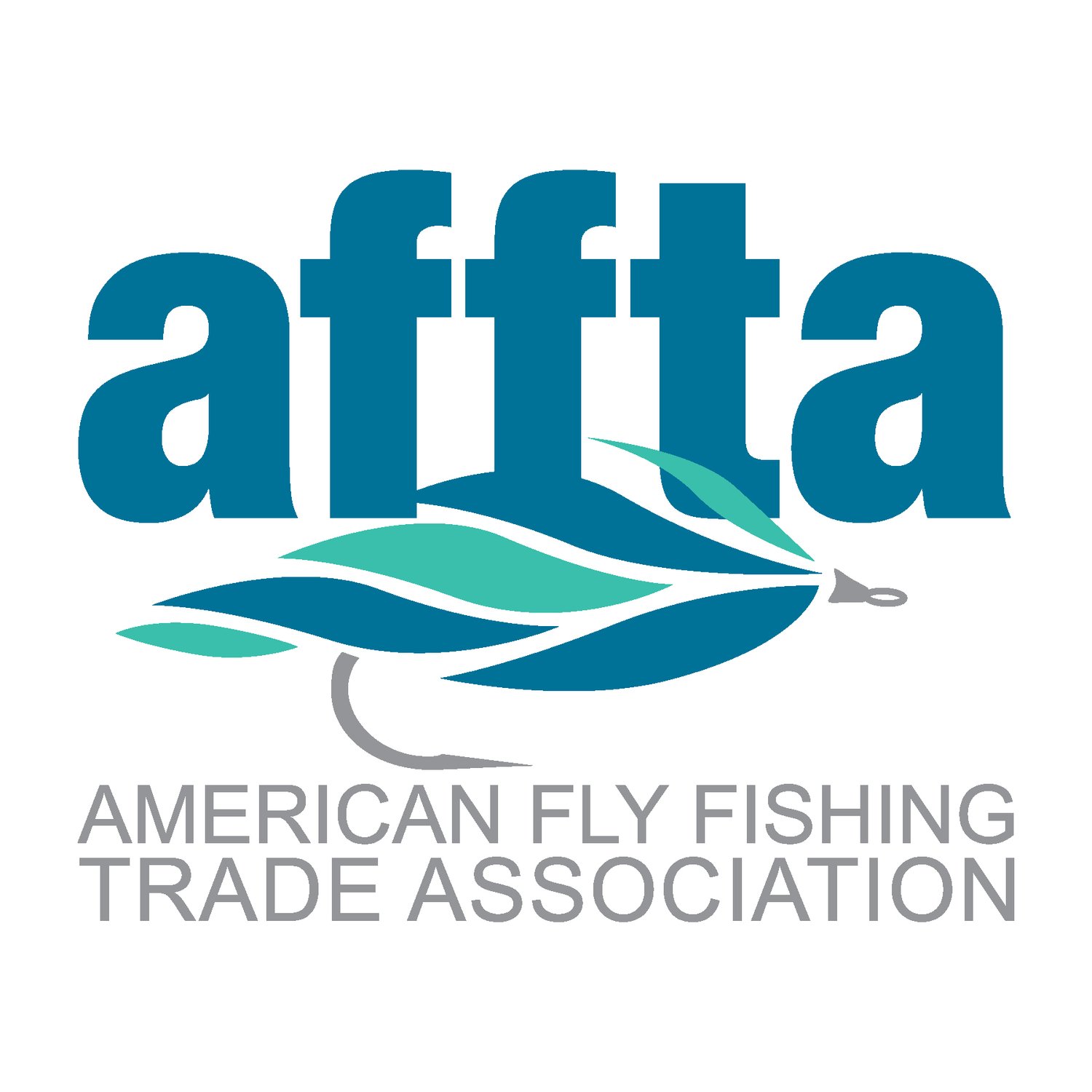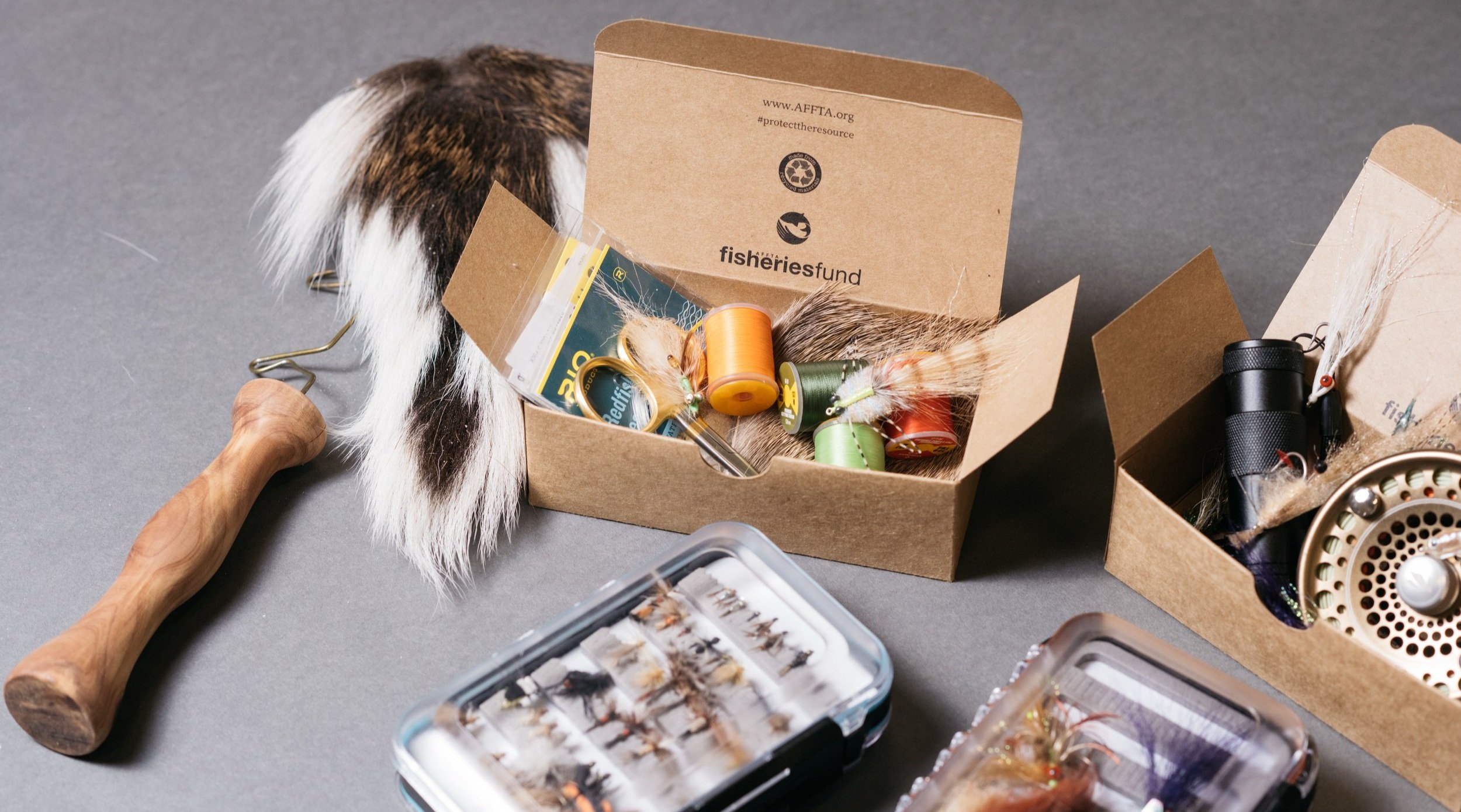A New Earth Project
In 2022, Atlantic Packaging announced the launch of A New Earth Project, its global initiative to create, scale, and advocate for sustainable packaging solutions to help eliminate plastic pollution from the world’s oceans, lakes, and rivers. This coalition of outdoor enthusiasts, industry-leading brands, and innovative packaging suppliers has grown into a robust movement to raise awareness of and find critical solutions to address the increasing levels of plastic pollution in global waterways. For Plastic-Free July, this week we’ll hear from Brook Hopper of A New Earth Project to learn more about ANEP’s goals and initiatives.
Introduce yourself, what is your role?
Brook Hopper: My name is Brook Hopper, and I oversee strategic partnerships and communications for A New Earth Project. We are honored to join AFFTA as its first packaging company member, and we look forward to serving as a resource to provide fly-fishing specific solutions like the recyclable fly box that’s available now to all AFFTA retail partners.
What inspired Atlantic Packaging to launch A New Earth Project?
Brook: It began very organically with a conversation between surfers on the North Shore of Oahu and Wes Carter, president, and third-generation leader of Atlantic Packaging, and has grown into a robust movement to raise awareness of and find critical solutions to address the increasing levels of plastic pollution in our global waterways. Hearing well-known surfers share their personal stories of how they've observed the rise in plastic pollution in the ocean was a big moment for Wes, because he realized that a lot of the plastic waste being discussed was coming from a supply chain that he was a part of. As an avid surfer and outdoor enthusiast, he realized that he and his company were in a unique position to have both the ability, and what he believed was the responsibility to drive much broader change. That conversation led to the official launch of A New Earth Project in April 2022, bringing together the voices of ocean and water advocacy groups with innovative brands and organizations in the supply chain equipped to bring solutions to the table. A New Earth Project is supported by veterans from the surf, outdoor, media, and packaging industries.
What are the main goals of A New Earth Project and how do you plan to accomplish them?
Brook: Our goals are to build awareness, increase education and inspire action. In success we will inspire individuals, brands, and packaging suppliers to be more aware of and committed to stopping single-use plastic at the source while elevating sustainable packaging as a meaningful brand attribute. We will accomplish this through compelling storytelling, leveraging our global advocates (athletes), and celebrating the wins along the way, while providing sustainable packaging solutions to brands of all sizes.
What has been the feedback from brands and individuals you’ve worked with as part of A New Earth Project?
Brook: The brands are excited to work with us for a lot of reasons, but one that I hear often is that they are relieved! We really make it easy for them and they appreciate that. Most brands don’t have resources to hire a team of employees to devote to packaging, even if it is a high priority for them. We can take on that function and help determine the best options, identify next steps, and make recommendations based on each brand’s unique sustainability and business goals. We also have great insight into supply chain constraints, which we take into account and allow us to provide suggestions that can actually be implemented. We don’t want perfection to become the enemy of progress, and we understand that this is a journey that won’t be achieved overnight.
I have seen some of your videos, can you share more about how you’re using content to raise awareness?
Brook: After we’ve worked with brands to solve their big-and-small packaging challenges, we then lean into our story-driven content to raise awareness about the environmental impacts generated by packaging that ends up in the world’s waterways, celebrating the people, brands, and organizations that are collaborating to find solutions. We also hear from our global advocates, including some of the most recognizable athletes in the world, as they share the devastating effects they’ve witnessed first-hand. To elevate this conversation and to reach a larger audience we partner with influential media platforms like OutsideTV, FuelTV, AbsintheTV, and Prime Video. By leveraging these partnerships, we can spread our message to a broader demographic and inspire action among outdoor and action-sports enthusiasts.
Why do you think it’s important to invest in story-driven programming?
Brook: By leveraging story-driven programming we can inspire not only the younger generations but the entire supply chain. Stories have the power to resonate emotionally and create a personal connection, as well as to engage audiences, build awareness, and inspire action. By providing real-life stories and examples of individuals or communities affected by the plastic-waste crisis, it becomes easier for people at all levels of the supply chain to understand the urgency and impact of their actions. These stories also highlight examples of innovative solutions, showcasing the potential for positive change to inspire others to make the necessary changes and contribute to a more sustainable future.
I did see that you work with a lot of athletes, why do you think this is important and who are you hoping to reach through these partners?
Brook: Our global advocates are well-respected in their respective sports and have large followings on social media that has also earned them attention from mainstream media outlets. Through our athlete partners we can leverage their followers to amplify our message and inspire action among both consumers and businesses. Our advocate roster includes surfers Kai Lenny, Koa Smith, Vaihiti Mahana, Ben Bourgeois, Carlos Munoz, as well as adventure skier Cody Townsend and pro snowboarder Kimmy Fasani. They play a vital role in educating followers about the negative impacts of plastic pollution in our world's oceans, lakes, and rivers, while demonstrating their commitment to environmental healing through their words and actions.
What resources do you offer that our members should be aware of?
Brook: We have an extensive resource hub on our website for consumers and brands seeking to learn more about circular packaging solutions and sustainability practices (check out the super helpful glossary for terms). These resources provide guidance and insight into issues like recyclability, regenerative design, reduced carbon footprints, life cycle assessments, and circularity, allowing for both an understanding of theoretical aspects and tangible strategies that can be incorporated into any sustainability journey. Also, check out our New Earth Approved Catalog. Drawing on Atlantic Packaging’s 75-year history in the global packaging supply chain, this catalog delivers real solutions through this collection of products and capabilities adhering to our key criteria, which includes: 100 percent curbside recyclable or home compostable, made from renewable resources, and not harmful to wildlife or ecosystems. The New Earth Approved catalog brings the purchasing power and delivery capabilities of Atlantic Packaging to businesses of all sizes. Partners may also tap into Atlantic Packaging’s award-winning Packaging Solution Center in Charlotte, NC, which helps brands solve their most challenging packaging problems in alignment with the ethos of New Earth Approved.
What is your advice for businesses and organizations looking to participate in Plastic-Free July?
Brook: Start somewhere! While it can be overwhelming, start thinking about ALL the areas where you and your business can reduce or eliminate unnecessary single-use plastic. If we do nothing, the amount of global mismanaged plastic waste is expected to triple by 2060- so we can’t continue with business-as-usual. Also, set your customers up for success! Take responsibility for what you’re sending into their homes. By prioritizing the elimination of consumer-destined-single-use plastic-packaging (especially flexible plastic) you’re not only helping your consumers do the right thing but you’re demonstrating your values to your customer and your packaging becomes a brand attribute! Did you know that 68% of consumers are more likely to purchase from brands that offer plastic-free packaging?
What initiatives are you currently working on and excited about?
Brook: We are very excited about the Plastic Waste Reduction and Producer Responsibility Act in California, a bill that stands as the most ambitious extended producer responsibility (EPR) legislation designed to combat plastic pollution. Our founder, Wes Carter, was recently appointed to a new advisory board for SB-54. Given that California is the world's fourth-largest economy, its potential to significantly impact global waste clean-up is considerable! We include many resources for brands looking to better understand EPR.
Anything else you’d like to add about ANEP, APG, the fly-fishing industry, or AFFTA?
Brook: By connecting the plastic pollution in our waters to the fly-fishing community, we can convey how single-use plastic packaging waste detracts from our fly-fishing experience, threatens the industry's health, and harms the planet. Embracing sustainable packaging practices and simultaneously working towards conservation efforts allows us to actively engage with fly fishing enthusiasts to ensure a better future for our beloved sport and the ecosystems it depends on.
What packaging challenges and/or opportunities have you frequently seen that the fly-fishing industry can learn from?
Brook: As consumers become increasingly aware of the environmental impact of single-use plastics, they expect their favorite brands to address this issue responsibly. By proactively adopting circular packaging solutions, fly fishing businesses can not only meet these consumer expectations but also differentiate themselves from their competitors. When we started addressing surfboard packaging, we weren’t thinking about the unboxing experience for consumers as much as designing an effective and efficient system that met our New Earth Approved criteria. When we first presented the S3 Pro to John Pyzel, founder of Pyzel Surfboards, he was blown away because we were able to replace a system of foam and plastic with one that was fully curbside recyclable, faster to pack, and really caught the attention of their customers. The shift made their packaging a meaningful brand attribute and signaled to their customers that that were doing their part to contribute to a more sustainable future! These are the types of experiences we’re hoping to create with our brand partners! If you don’t know where to start, shoot me an email (brookh@anewearthproject.com) and I’ll make sure you get pointed in the right direction. #We Do This Together








